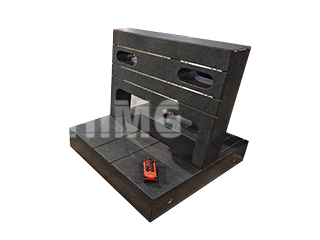Choosing the right granite surface plate is a crucial decision that impacts the precision and reliability of your work. The market offers a wide variety of options, which can make it difficult to determine true quality. As a leading manufacturer of precision granite, ZHHIMG® is here to guide you through the process, helping you select a tool that will deliver stable, accurate performance for years to come.
The ZHHIMG® Difference: Uncompromising Material Quality
The quality of a granite surface plate begins deep within the earth. Our materials are sourced from natural rock strata that have undergone millions of years of natural aging, a process that ensures their inherent stability and dimensional integrity. We specifically choose granite with a fine, dense crystal structure and firm texture.
Our ZHHIMG® Black Granite has been scientifically selected to possess a high specific gravity, excellent compressive strength, and a Mohs hardness greater than 6. Unlike cast iron, granite is a non-metallic material, which means it is non-magnetic and has no plastic deformation. It will not rust or corrode from exposure to acids or alkalis. These properties make it the ideal long-term choice for a high-precision reference plane.
A Buyer’s Guide: How to Inspect for Quality
Even with a high-quality material, meticulous craftsmanship is required. When inspecting a granite plate, follow these professional tips:
- Visual Inspection: In a well-lit area, first examine the work surface. Ensure the color is uniform and the grain pattern is natural. The surface should be free of any cracks, dents, or other flaws.
- Verify Certified Accuracy: A reputable manufacturer’s certificate is essential. Do not simply accept a grade like “Grade 0″ or “Grade 00.” The certificate should specify the exact dimensions and the corresponding flatness tolerance in microns. You should be able to verify this data against established international standards.
- Check for Professional Lapping Marks: The surface of a high-quality granite plate will show the subtle marks of meticulous, professional lapping. The absence of a smooth finish or the presence of rough spots can indicate poor craftsmanship.
Proper Usage and Maintenance for Lasting Precision
Once you have selected a high-quality granite plate, its longevity and accuracy depend on proper usage and care.
- Handle with Care: Always place workpieces slowly onto the surface to avoid impact damage. Never drag workpieces across the plate, as this can cause wear.
- Optimal Environment: Use the plate in a dry, well-ventilated area with stable temperature and minimal vibration. Our Grade 00 plates require a controlled environment of 20±2°C for optimal performance.
- Regular Cleaning: After each use, clean the surface with a mild detergent and a soft cloth, then dry it completely. You may apply a thin layer of protective oil, such as mineral or even cooking oil, to prevent dust from adhering to the surface.
- Professional Servicing: If your granite plate develops any depressions or unevenness, do not attempt to repair it yourself. Contact the manufacturer or a qualified technician for professional re-lapping, which should be done approximately once per year to maintain its certified accuracy.
In contrast to cast iron, which can suffer permanent deformation from heavy impact, a granite plate will only chip. It is 2-3 times harder than cast iron (equivalent to HRC > 51), which is why its precision retention is so much better. By choosing a high-quality granite plate and following these care instructions, you can be sure that your measurement reference will remain stable and reliable for decades to come.
Post time: Sep-30-2025

